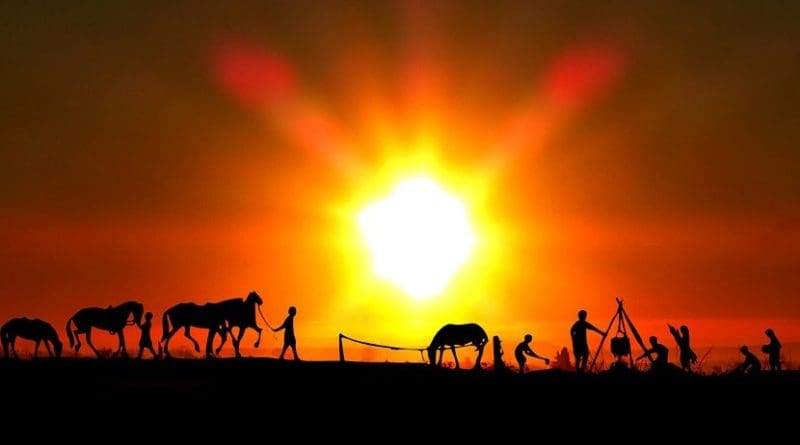Cowboy Revisionist History – OpEd
I was pleased to learn that today is the Eighth National Day of the Cowboy. As such, it’s especially appropriate that we take advantage of the opportunity to set the record straight on many things Cowboy and Western.
First of all, the Old West was far more peaceful than is commonly portrayed in movies and the popular culture. As Thomas DiLorenzo points out in his Independent Review article, “The Culture of Violence in the American West: Myth versus Reality,” “some authors assume that the West was very violent and then assert, as Joe Franz does, that ‘American violence today reflects our frontier heritage’”—an argument that has been resurfacing in the past week in the aftermath of the Aurora, Colorado shootings. Yet DiLorenzo finds: “The civil society of the American West in the nineteenth century was much more peaceful than American cities are today, and the evidence suggests that in fact the Old West was not a very violent place at all.”
Further, in their chapter, “An American Experiment in Anarcho-Capitalism: The Not So Wild, Wild West,” in the Independent Institute book Anarchy and the Law, Terry Anderson and P.J. Hill found:
The West during this time often is perceived as a place of great chaos, with little respect for property or life. Our research indicates that this was not the case; property rights were protected and civil order prevailed. Private agencies provided the necessary basis for an orderly society in which property was protected and conflicts were resolved.
Thomas DiLorenzo also details that it was the establishment of a standing army in the aftermath of the Civil War that created the “violent” American West which consisted primarily of violence against Indians. Prior to the Civil War, settlers obtained land through negotiating with Indians. Following the Civil War,
white settlers and railroad corporations were able to socialize the costs of stealing Indian lands by using violence supplied by the U.S. Army. On their own, they were much more likely to negotiate peacefully. Thus, “raid” replaced “trade” in white–Indian relations. Congress even voted in 1871 not to ratify any more Indian treaties, effectively announcing that it no longer sought peaceful relations with the Plains Indians.
In his article, “How the Western Cattlemen Created Property Rights,” Independent Institute Senior Fellow Robert Higgs details how cowboys reversed the early tragedy-of-the-commons problems prevalent prior to the establishment of property rights in the West and protected land from overgrazing:
For example, in 1883 an association operating on the Musselshell range in east-central Montana published a description of its range in the Helena Daily Herald and stated: ‘We the undersigned, stock growers of the above described range, hereby give notice that we consider said range already overstocked; therefore we positively decline allowing any outside parties or any parties locating herds upon this range the use of our corrals, nor will they be permitted to join us in any roundup on said range from and after this date.’
Spending summers growing up on my family’s cattle ranch in Northern Nevada, I was well familiar with the difference in quality of private land versus federal land managed by the Bureau of Land Management (BLM). BLM land was notoriously overgrazed and ill-managed. In the image —you guessed it—BLM land is on the left.
In short, let’s hear it for the Cowboy: the peaceful protector of property rights and the environment!

